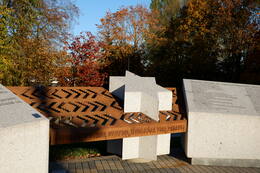The man who saved the persecuted
Bronius Gotautas, known to the people as Broliuk, risked his life during and after World War II to save persecuted people - both Jews, Lithuanian nationalists, and Russian soldiers.
"This man handed over forged passports that priests made for Jews. He was illiterate, so he carried men's passports in one pocket and women's in the other, and people had to read them themselves, find their surname," - says Kama Ginkas about the unusual savior. Broliuk's mission was not limited to one group - "When the Soviet army came in the 1940s, he hid the so-called Lithuanian nationalists. When the Germans came - Jews and Russian soldiers." After the war, he found himself in Germany, and around 1950 he tried to return to Lithuania: "Broliuk asked to help him return to his homeland. The man had no idea what life was like here," - recalls the narrator about the dramatic situation when his father could not answer Broliuk's letter, thus possibly saving his life.
Related timeline
Related objects
Square for the Righteous Among the Nations (Monument)
On 22 October 2021, the Square for the Righteous Among the Nations (monument) was inaugurated in Šiauliai, at the intersection of Ežero and Vilniaus streets. It is the first monument to the Righteous Among the Nations in Lithuania. The monument was created by the designer Adas Toleikis, a native of Šiauliai, and the idea of the monument was initiated by Sania Kerbelis, the chairman of the Jewish community of Šiauliai County.
The monument “Jungtis” is engraved with the surnames of the “Righteous Among the Nations” of Šiauliai County, thus commemorating 148 Jewish rescuers, while artistic accents mark the gates of the Šiauliai Ghetto. There were two ghettos in Šiauliai: in the so-called Kaukazo Quarter and in the Ežero-Trakų Street Quarter. Physically strong and able-bodied people were sent to the first one, and specialists (doctors, mechanics, etc.) to the second. The Šiauliai Ghetto was established in the summer of 1941 on the orders of the Šiauliai Commandant and liquidated in 1944 with the retreat of Nazi German troops. The remaining Jews were transferred to Stutthof and Dachau concentration camps. More than 5,950 Jews were imprisoned in the Ghettos. During the inter-war period, Šiauliai was home to about 6,500–8,000 Jews, some of whom left voluntarily into mainland Russia. After the Holocaust, there were only about 350–500 Jews left.





